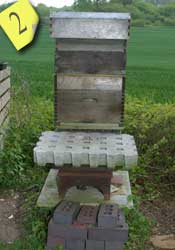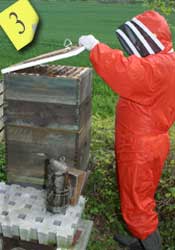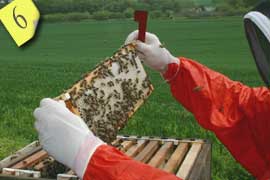
 |
HOME |
An Apiarist's Bees What does a beekeeper do and what happens inside a hive? We joined members of the Meon Valley Bee Keepers Association for a tour of one of their members hives. |
||||
|
|
 A typical 'National' beehive. The boxes separately house the bees and their honey, with the Brood Box at the base. Supporting the structure is a set of coalyard scales, although not all apiarists utilise scales on-site like this. |
||||
 Fully protected with veil and gloves, and having removed the top of the hive, Don gingerly lifts the protective top wood capping the uppermost Super Box. This board has air vents that can be used to adjust air flow within the hive and covers a grill or Quilt Board to contain the bees. |
|
||||
|
|
 Here Don starts to work through the box frame by frame to check on the condition of the honeycomb. The apiarist will check to see if all of the comb cells have been capped which will indicate that the honey is ready for harvesting. He will also check for infestation by other insects. |
||||
| NEXT | |||||
| Suggest a topic for another Wey River photo-essay |
|||||